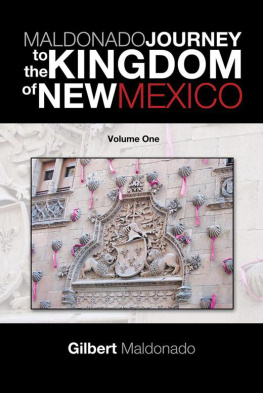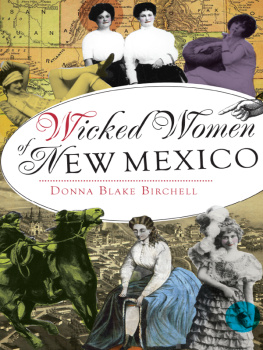NO MERE SHADOWS
NO MERE SHADOWS
FACES of WIDOWHOOD
in EARLY COLONIAL
MEXICO
SHIRLEY CUSHING FLINT

2013 by the University of New Mexico Press
All rights reserved. Published 2013
Printed in the United States of America
18 17 16 15 14 13 1 2 3 4 5 6
The Library of Congress has cataloged the printed edition as follows:
Flint, Shirley Cushing.
No mere shadows: faces of widowhood in early colonial Mexico /
Shirley Cushing Flint.
p. cm.
Includes bibliographical references and index.
ISBN 978-0-8263-5311-5 (cloth : alk. paper) ISBN 978-0-8263-5312-2 (electronic) 1. WidowsMexicoSocial conditions16th century. 2. WidowsMexico Economic conditions16th century. 3. Married womenMexicoSocial conditions 16th century. 4. MexicoSocial conditionsTo 1810. I. Title.
HQ1058.5.M6F55 2013
306.883097209031dc23
2012034767
To the mothers
Mary Louise Moore Cushing, MA
Anna Belcher Moore
and sisters
Barbara Ann Cushing, MSW
Betty Steinmetz, BA
Jane Flint, MA
Nancy Jane Cushing, BS
Suzanne Flint, MA
CONTENTS
ILLUSTRATIONS
MAPS
CHARTS
FIGURES
ACKNOWLEDGMENTS
The life of an independent scholar should not be mistaken for a life free from constraints or financial worries. Rather, it consists of stolen moments in distant archives, small financial grants from interested parties, and in my case, above all, the good fortune to work alongside Richard Flint, my husband.
Back in 1996, the New Mexico Humanities Council and our good friends Gayle and Bill Hartmann gave me funding to accompany Richard to Mexico City to delve for three weeks into the Archivo General de Notaras del Distrito Federal. It was there that I first encountered documents written at the behest and on behalf of the Estrada women of colonial Mexico City. I was lucky enough to accompany Richard again in 19971998 when he received a Fulbright fellowship to Spain, where I, too, spent nine wonderful months in the Archivo General de Indias, with a side trip to Almagro to breathe the air and delve into the archives of doa Marinas hometown.
Over the subsequent years, our joint research on the expedition into New Mexico led by Francisco Vzquez de Coronado, funded in large measure by the National Historical Publications and Records Commission of the National Archives, gave me additional research time to pursue the Estrada women in the Archivo Histrico Municipal, Almagro, Spain (heartfelt thanks to the directora); the Archivo Histrico Protocolos, Sevilla; the Archivo General de Gobierno del Estado de Colima, Mexico; and the Archivo Histrico del Municipio de Colima, Mexico, as well as to visit Ciudad Real and the headquarters of the Calatrava Order in Spain and doa Marinas mill in Tlalnepantla, Mexico.
Piggy-backing on another Fulbright that Richard received in 2009, along with several grants we obtained together from the Program for Cultural Cooperation between Spains Ministry of Culture and U.S. universities for our latest project regarding the individual members of the Coronado expedition, I was able to tie up some loose ends at the Archivo General de la Nacin in Mexico City, as well as find doa Beatrizs convent and see some wonderful old maps of Mexico City.
Throughout this long research odyssey, my brother, Donald Cushing, never failed to lend his support, especially financially. He consistently asked about my progress with Mrs. B and offered resources to pursue my research. To him a very special thanks.
Richard Flints insightful reading of this book, backed by many years of forbearance when I planned side trips that just happened to include elements from the lives of the Estradas, and our many discussions about my research and its hurdles have made this work a better piece of scholarship. Likewise, I owe a debt of gratitude to Sandra Lauderdale Graham, whom I came to know fortuitously and now call friend, and from whose innate ability to read a manuscript, see its worth, and make suggestions for its improvement I now benefit. Not everyone can do this with intelligence and grace.
Dra. Ivonne Mijares-Ramirez and her colleague Elena Anzures Medina, both of UNAM (Universidad Nacional Autnoma de Mxico), went out of their way to obtain a handwritten copy of doa Luisa de Estradas signature, something I despaired of ever getting.
Although I understand that reviewers must be allowed to remain anonymous, I cannot help wishing to thank the readers of this manuscript personally. It is such a pleasure to read evaluations written by people who know what they are talking about, see the merits in your argument, and insist on the highest standards of its presentation. Thank you both for taking the time to give me valuable feedback. I hope that among these pages you will see your handiwork.
Jane Kepp contributes much more to a manuscript than her skill as a copyeditor. Her insightful questions have brought greater clarity and conciseness to this book, and I am deeply grateful.
INTRODUCTION
In Spanish literature, art, theater, cinema, and history, the widowed Spanish woman appears regularly as a dour, diminutive figure dressed in black, devotedly attending church and meekly accepting male authority. Recent European and Latin American scholarship is now forcing this stereotype to yield. Although previous analyses of widows in sixteenth-century Europe and the New World accurately portrayed them simply as keepers of hearth and home, enough exceptions existed to suggest that women of all classes, by either choice or circumstance, exerted considerable power within and without their families. The old stereotype ignores women who operated successfully outside the confines of conventionality.
Stephanie Fink De Backers book Widowhood in Early Modern Spain echoes my findings for early colonial Mexico, and Allyson Poskas Women and Authority in Early Modern Spain expands and corrects our perceptions of powerful, capable widows beyond aristocrats to include members of the peasant class. No longer is the widow a nearly invisible personage within the greater social and political realms of sixteenth-century history; rather, she is frequently discovered to be a person holding some power within a family, a person worthy of respect. Regardless of station in life, widows, mindful of preserving their families legacies, prove to have been capable guardians, astute managers of property, and savvy businesswomen.
The lives and choices of five such powerful widows in colonial Mexico, the remarkable Estrada women of Mexico Citya mother, three daughters, and a granddaughterreveal the possibilities available to aristocratic women of the time and the kinds of strategies they employed. These five widows created and sustained a family network in order to further their own goals within inherited social norms. Each, when widowed, chose not to remarry. Their stories illustrate the constraints placed on both widows and women in general by the religious, secular, and legal cultures of their time and the ways in which some women refused to succumb to those constraints.
The experiences of this small group of kinswomen from the upper class of early colonial Mexican society do not speak to the larger issue of legal access for all classes, genders, races, or socioeconomic groups. But I do not mean to suggest that women or men from groups other than that to which the Estrada women belonged were excluded from the Spanish legal system. In fact the framers of the Spanish legal system made valiant efforts to mandate access for all the kingdoms subjects, regardless of station in life. Unfortunately, what was mandated and what was practiced often diverged. The Spanish were consummate bureaucrats and insisted that they be paid for their work, so that effective access to the courts required money. Paupers and Indians were exempt from the fee schedules, but that exemption did not level the playing field. In many cases, those with few resources were denied credible access.




